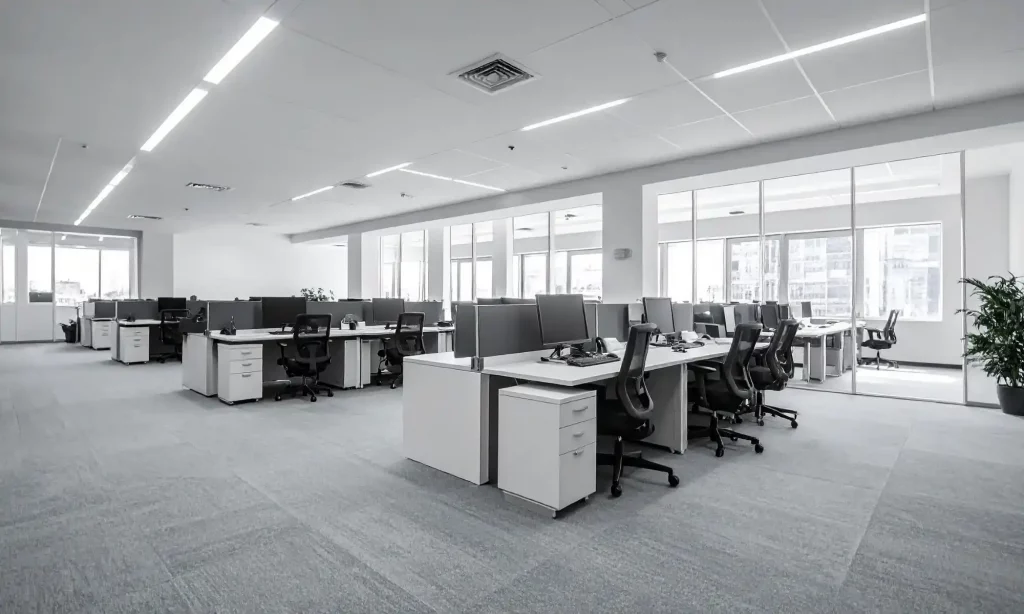The Manchester office scene has spent much of the past three years feeling like a car stuck in second gear. Everyone knows the engine is powerful, the city keeps attracting big names, yet the numbers on take-up, new completions and rental growth have refused to shift into overdrive. For anyone trying to let, buy or develop office space in the city right now, the question is simple: what’s holding things back, and when does the handbrake finally come off?
The Three Big Brakes on Growth
First, the cost of building anything new has become borderline ridiculous. Construction inflation hit double digits for several years running, steel and concrete prices are still 30-40 % above pre-pandemic levels, and labour shortages in the North West remain acute. Developers who locked in schemes in 2021-22 are now delivering buildings at costs they never budgeted for. The result? Almost no speculative development is starting in 2025. Manchester’s development pipeline for Grade A space in 2026-27 is the thinnest it has been in two decades.
Second, interest rates and debt pricing have scared off a chunk of the investor pool. Real estate used to be the darling of private-equity and overseas funds looking for 5–6 % yields in a regional city with strong fundamentals. Today, with swap rates still elevated and banks demanding 60–65 % loan-to-value at best, many funds have simply parked capital on the sidelines or moved it into living sectors and industrial.
Third, occupier behaviour hasn’t fully settled. Hybrid working is now the norm rather than the experiment, and most large corporates have reduced their footprint by 20-30 % compared to 2019. The flight-to-quality is real companies will pay record rents for the best ESG-compliant, amenity-rich buildings but they won’t commit to second-tier or tired 1990s stock. That polarisation has left a huge chunk of the market in limbo.
The Hidden Bright Spots Nobody Is Shouting About
Despite the gloom, the data underneath the headlines tells a different story. Take-up in the first half of 2025 actually rose 29 % year-on-year once you strip out the monster 2022 deals that skewed the baseline. More importantly, 86 % of that space was Grade A. The days of tenants taking “good enough” space are over; they either go best-in-class or they stay put and extend.
Vacancy across the entire Manchester market sits around 11 %, but prime availability the stuff that actually lets today has crept up to just 4.5 %. In Spinningfields and the core city centre, some agents are openly saying they have nothing left to show over 20,000 sq ft that isn’t already under offer.
Rents tell the same tale. Prime headline rents touched £82 per sq ft in NOMA and £78 in Spinningfields in recent deals levels that would have been laughed at three years ago. Incentives have quietly shrunk from 24-30 months of rent-free in 2022 to 12-14 months on a ten-year lease today. That’s real pricing power returning.
The Deal That Woke Everyone Up
The clearest signal came in early November 2025 when Manchester Airports Group sold the 3000 Manchester Business Park campus to Manchester Holdings in a deal understood to be north of £19.5 million. The park 400,000 sq ft across seven buildings, 95 % let, and sitting three minutes from the airport terminals changed hands at a yield most people thought had vanished from regional offices. Within days, brokers reported a flurry of requirements from funds suddenly asking for anything similar within the M60.
What Happens Next
The honest answer is “slow but steady”. No flood of new supply is coming to kill the recovery the next meaningful Grade A completions aren’t due until late 2027 at the earliest. That scarcity is the single biggest driver of rental growth for the next 24-30 months.
Occupiers who delayed decisions in 2023-24 are now being forced back to the table. Professional services firms, tech companies and life-science businesses expanding out of the Oxford Road corridor all need space before the end of 2026, and there simply isn’t enough of the right stuff left.
Investors are creeping back too. Korean and German funds in particular have been active on pricing in the second half of 2025, comfortable that the yield compression story still has legs when prime offices are trading below 5.5 % in some cases.
The Bottom Line for 2026 and Beyond
Manchester isn’t about to repeat the 2015–2019 boom when 1 million sq ft was absorbed some years. Those days are gone. But the market has quietly cleaned itself up: bad stock is obsolete, incentives are tightening, and the best buildings are trading at levels that make owners smile again.
For tenants, the message is clear if you want the top floor of the best building in town, start talking now, because in twelve months’ time the choice will be gone. For investors and developers, the window to buy or commit to new schemes at the bottom of the cycle is closing faster than most realise.
If you’re based in Manchester, England, and your office is already in great shape with no cleaning or facilities issues holding you back, get in touch with Clean Bee Facilities Management Services they keep some of the city’s sharpest buildings looking immaculate so landlords and tenants can focus on the deals that matter.
The engine is still in second gear, but the road ahead is finally clear. Manchester offices aren’t roaring yet but you can definitely hear the revs building.


